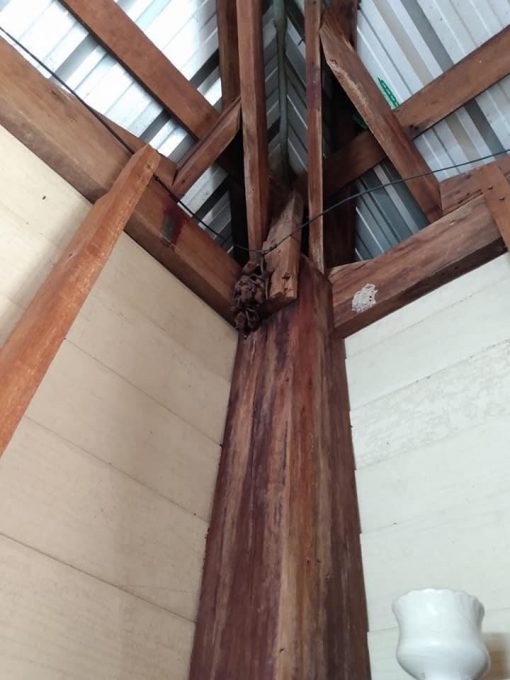Bats are in your home to find a safe place to roost.
During the winter, some bat species hibernate. Attics share similar qualities to their natural roosting locations. During the spring and summer, some bat species form maternity colonies and give birth to their young (pups).
Although bats should be professionally removed when discovered in homes, bats do great things for our backyard ecology and around the world. They eat an enormous amount of mosquitoes and other bugs that plague summer gardens and pollinate our plantings. The Wildlife Damage Management Program of the Cornell Cooperative Extension says that 100 little brown bats, one of the most common bats in the U.S., “may consume hundreds of thousands of mosquitoes and other small insects each summer.”
Despite their good qualities, bats remain unwanted guests when they take up residence in our homes’ living and nonliving areas.
Common Types of Bats Found in Homes
There are about 45 species of bats living in the U.S., but the most common species to occupy homes are big brown bats and little brown bats.
- Big brown bats, despite their name, only weigh between one-half to three-quarters of an ounce, with a wingspan of about 15 inches. They live throughout the U.S. and eat an enormous amount of insects. Because these bats hibernate during the winter, home attics become a warm and stable environment to winter over and raise their families in summer.
- Little brown bats weigh less than half an ounce with a wingspan of about 10 inches. These bats like to live in large colonies and also hibernate through winter.
How Do Bats Get into Homes?
Generally, bats get into attics and outhouses through tiny gaps and cracks in roofs, eaves, and soffits. If you find a bat within your living area, it’s most likely young and inexperienced and flew in through an open window. Bats are also attracted to vents as they can usually find insects there.
Sometimes bats are just as happy roosting in an outdoor shed, behind house shutters, or hanging outside the house in the shade of roof eaves.
Why Do You Need to Get Rid of Bats?
While bats do much good for our environment, they pose health issues when roosting in your home. Unfortunately, bats carry diseases such as rabies, ebola, and SARS.
Bat guano contains bacteria that form spores that can cause histoplasmosis. This infection causes respiratory issues, fatigue, cough, and fever and can even be fatal in those with compromised immune systems.

Getting the Help of Wildlife Control Specialist
You need the help of professionals to eliminate bats from inside and outside your home for two main reasons:
- The health risks to you and your family
- Bats are a protected species.
Many species of bats are endangered and legally cannot be harmed in their removal. Specialists will know the laws and regulations in your geography and are licensed to legally and humanely remove bats from your property.
When bats are within your home, specialists will set up a bat valve or one-way door through which the bats can leave at dusk but cannot get back in. Wildlife control specialists will also seal all gaps and cracks where bats can enter. Often this will have to take place after any pups are old enough to fly out on their own.
If bats are using your eaves and shutters as their roosts, exclusionary solutions keep the bats from being able to get behind the shutters.
Bats don’t cause structural damage to your home, but a large amount of feces and urine can cause unwanted odors and contaminate attic insulation. A wildlife control company will also clean and sanitize any area infested by bats, returning your home to its original condition.
- List Item #1
- List Item #2
- List Item #3
